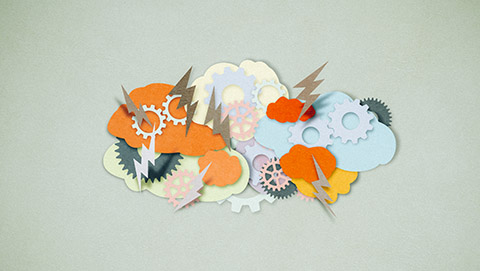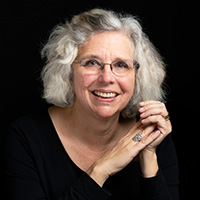
A client is recovering from a very severe case of COVID-19. She is in physical therapy and wants to add massage to her recovery. What do we need to know to work safely? What are some assumptions we can and cannot make about this client’s situation? Put on your critical thinking cap and listen in!
Resources: 
Pocket Pathology: /abmp-pocket-pathology-app
New Webinar: “Long COVID” here: /learn/


About Advanced Trainings
Since 1985, over 8,000 professionals have trained in the Advanced Myofascial Techniques series. Drawing from a wide range of disciplines, the focus is on unusual, interesting, and fresh approaches that will increase effectiveness, expand technique repertoire, and inspire creativity and innovation. Designed for manual and movement therapy practitioners, practitioners of all levels will gain valuable tools and perspectives they can immediately put to clinical use. Join us for our upcoming 2023 Thailand retreat!
Website: advanced-trainings.com
Hold the Dates for our 2023 Thailand Retreat! Feb 20-Mar 2, 2023
Email: info@advancedtraining.com
Facebook:https://www.facebook.com/Advanced.Trainings1
and
https://www.facebook.com/tilluchau.live
Instagram: https://www.instagram.com/tilluchau/
0:00:01.2 Ruth Werner: Hey, I Have a Client Who listeners, did you know I have a growing library of NCB approved one-hour online self-paced continuing education courses that you can do any time, anywhere? Well, now you know. Current classes include, "What's Next? COVID-19 Updates for Massage Therapists," and, "A Massage Therapist's Introduction to Pharmacology, Part one," and brand new, "A Massage Therapist's Introduction to Pharmacology, Part two." Classes are $20 each, and they confer one hour of continuing education credit. Wanna know more? Visit my website at ruthwerner.com and check it out. Be sure to sign up for my mailing list so you'll never miss a new class.
0:00:44.8 S2: Til Luchau and the Advanced-Trainings faculty invite you to join them on a floating raft house in Thailand for a special 10-day retreat, combining hands-on advanced myofascial techniques with Zoga movement classes, all surrounded by the natural beauty of Thailand's jungle ecosystem. Book now to save your spot for the February 2023 retreat, plus, check out Til's amazing subscription and get unlimited access to curated bodywork and movement courses from just $20 per month. Learn more about all of these opportunities at advanced-trainings.com.
[music]
0:01:38.6 RW: Hi, and welcome to I Have a Client Who, Pathology Conversations with Ruth Werner, the podcast where I will discuss your real life stories about clients with conditions that are perplexing or confusing. I'm Ruth Werner, author of A Massage Therapist's Guide to Pathology, and I have spent decades studying, writing about and teaching about where massage therapy intersects with diseases and conditions that might limit our client's health. We almost always have something good to offer, even with our most challenged clients, but we need to figure out a way to do that safely, effectively and within our scope of practice, and sometimes, as we have all learned, that is harder than it looks. Today's I Have a Client Who story comes from a post from one of my favorite massage therapy social media sites, The Massage Sloth Clubhouse on Facebook, and this person who gave me permission to share this question says this, "I have a new client coming in next week, she's three months post-COVID, was hospitalized for several weeks. Her comment was that she should have passed, and a month recovery at home, she's in physical therapy now. The therapist is recommending including massage in her recovery. Pre-COVID shut down, she received massage regularly from a therapist that did not return after the shut down. Just curious, what others who have worked with someone similar have found beneficial in their sessions?"
0:03:10.7 RW: Let's take this apart a little bit. This client's previous massage therapist is no longer in practice, so we know that she is a new client to this contributing practitioner, but we also know the client is not new to massage, which is great. The client was in the hospital for several weeks with COVID, although we don't know if she was on a ventilator, but that does give us some ideas about the severity of her infection. She's in physical therapy now, but we don't know what for. It could be for general deconditioning or to help build up some lung and heart strength, but her PT recommends that she gets massage for her recovery, and that's cool. So there are a few assumptions we can make so far, one is that since she's in physical therapy, she has some tolerance for physical activity, and that also means that it's probably possible to construct a massage therapy session that will be safe and appropriate for her. Also, her PT thinks getting massage is a good idea, and there's a great opening, of course, after getting more information on the client's experience and goals, then getting her permission to consult with the physical therapist is likely to yield some more good information and maybe some strategies.
0:04:22.4 RW: Right, so this is the moment in the podcast where I typically talk about the disease or condition that the client has with a mind toward using that information to help suggest some clinical decisions. And a part of me feels like, "Oh gosh, haven't we all had enough COVID?" And another part of me feels like, "Yeah, but this is a story we're going to be hearing a lot," because at this moment in the United States, we've seen 80 million cases, and that doesn't include people who test positive at home, but they never go to the doctor, and we're coming up on a million deaths, and not all cases are as severe as this client's thankfully, but even mild cases can sometimes leave damage in their aftermath. So I am gonna talk a little bit about COVID, but I will also point you to my latest webinar for ABMP, all about working with clients who have long COVID, and it's called Long COVID, and the January-February edition of massage and bodywork has a really long article on really long COVID, that is pretty comprehensive. And of course, these links will be in our show notes.
0:05:34.4 RW: By now, we all know that COVID is a viral infection with a cootie called SARS-CoV-2, which stands for Severe Acute Respiratory Syndrome, Coronavirus Type 2, and this virus causes an infection we call COVID-19, and that's because it was identified in 2019, not because there were 18 previous versions of it, and we know that this virus mutates and the current most common form is called The Omicron variant. Omicron is super contagious, even more than the original variety of COVID-19, and it has sub-types of its own now that are even more contagious than the original Omicron. Epidemiologists compare Omicron type BA.2 transmissibility to measles, which is currently the most communicable virus we have ever seen, and we also know, thank goodness that COVID vaccines work extremely well to reduce the risk of severe infection and hospitalization and death. But we also know that people who have been vaccinated and boosted can still contract this infection and they can still spread it to others, but how does this cootie work to make people sick?
0:06:50.9 RW: Well, the virus invades cells that have an entry site called an ACE-2 receptor, and of course, we know now that we have these ACE-2 receptors all over the place, in cells of the alveoli and the kidneys and the liver, but also in the heart and the neurons and the glial cells, and alarmingly for massage therapists, of course, we also have ACE-2 receptors in the endothelium net lines, our blood vessels, and we know here that disruption can lead to clotting and a whole slew of other bad outcomes. In addition, we see that in some people, COVID stimulates a radical inflammatory response, one that is way more extreme in some people compared to others, and this is a factor in who develops mild infections versus who has severe and life-threatening ones. Now that we've been at this for a couple of years, we are also starting to collect information about survivors. Some people come through infections, even really severe ones, relatively unscathed, but some people come through infections, even very mild ones with damage. But wait. What is that damage? How long does it last? Is it permanent? Do we know? What tissues or organs does it affect? And most importantly, how do we treat it? Or how do we prevent it? All of these are still frustratingly open questions about the after effects of COVID-19.
0:08:21.8 RW: Returning to our client for today, let's take the information we have and apply some critical thinking steps to maybe begin to envision some options or strategies, and in this particular case, we're a little bit stuck on step one, which involves identifying what the client wants from massage in general and from her first session in particular. It's great that she's working with a PT because they probably have some specific goals that they are working toward together and massage might be helpful in that effort, but she may have other kinds of things that she'd like massage to help her with, maybe lowering anxiety or improving her sleep. We don't know yet, and without knowing that, it will be difficult to get very specific about identifying risks and benefits that massage might bring. So let's always remember that a client's priorities are the central factor, the absolute starting spot on which every other clinical decision has to be made.
0:09:22.2 RW: The next step is to identify relevant safety variables, which happens when we look into the pathophysiology of the condition that we're talking about. Again, we know this lady is recovering from a severe COVID infection, but we don't know if she's dealing with some of the long-term consequences that this infection could bring about. That includes impairing the strength of her heart or the capacity of her lungs, or the function of her kidneys. She might have inflammation in her central nervous system or new onset diabetes or long-lasting coagulopathy or none of the above. We don't know yet, and so our decisions about safety needs to be deferred until we get that information. The next step is to check in on assumptions. For instance, it's really easy to assume that if a person tells you they are short of breath, that improving their ability to take a deep breath without pain or restriction must be their priority, but in fact, that might not be the most bothersome thing that they're dealing with, and they might really be hoping that you will help unravel some of their neck pain.
0:10:30.8 RW: Personally, I always have a tendency to leap to the assumption that long COVID issues is the most important thing for this client, but that might not be accurate. This person might not have long COVID at all, so although we wanna gather lots of information about how this situation has affected our client's quality of life, it all has to reflect back to that first question, doesn't it, which is, what is she hoping to achieve with your time together. Then we want to consider possible strategies and check to see if we're leaving anything out of those considerations. Those strategies will depend on your skill set, plus what she wants to achieve and what other kinds of risks there might be depending on her particular situation. One thing we haven't mentioned yet for instance is what kinds of medications she might be taking. It is possible, in fact, likely that someone who had a severe COVID infection might have a long-term prescription of anticoagulants because of that high risk of blood clotting that we talked about with both the very extreme inflammatory responses combined with damage to vascular endothelium. When we have been able to create a clearer picture of what the client wants and what her limitations might be, that's when it's time to plan a course of action, and to get as specific as possible about why we choose to do the things we do.
0:11:53.8 RW: And then the last step in critical thinking that I would love to see massage therapists take on more conscientiously is the process of evaluating effectiveness. This doesn't mean we have to set up an elaborate collection of quantitative measures for every purpose, but what it does mean is when we make note of our client's priorities, then we check in with them after the massage, maybe the next day, maybe just the next time they come see us, but we wanna refer back to what their priority was for that last session to see if our work helped them move in the direction that they wanted. Another assumption we don't wanna make, of course, is that their priorities will be the same with every session. We always need to understand that this is a moving target, but unless we check back to see how things went, we will not know if our work was effective.
0:12:49.3 RW: So where does this leave our contributor who has a client recovering from a severe infection who wants to receive massage? In pretty good shape actually. The client's receiving physical therapy, so we know there's another provider to share information with, assuming the client gives permission. The client is eager to receive work and the massage therapist has access to lots of information to help guide them through a good, safe, and effective decision-making process, and so do you.
0:13:19.4 RW: Hey everybody, thanks for listening to I Have a Client Who, Pathology Conversations with Ruth Werner. Remember, you can send me your I Have a Client Who stories to, ihaveaclientwho@abmp.com, that's I have a client who, all one word, all lowercase, @ABMP.com. I can't wait to see what you send me and I'll see you next time.
[music]